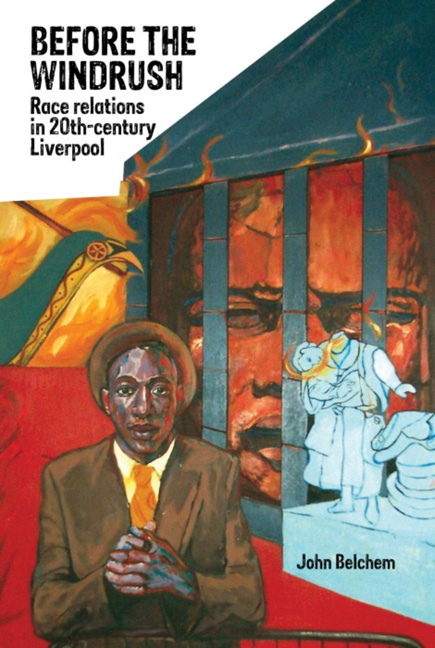Book contents
- Frontmatter
- Dedication
- Contents
- List of illustrations
- List of tables
- List of abbreviations
- Acknowledgements
- Preface
- Introduction: ‘The most disturbing case of racial disadvantage in the United Kingdom’
- Chapter One Edwardian cosmopolitanism
- Chapter Two Riot, miscegenation and inter-war depression
- Chapter Three Wartime hospitality and the colour bar
- Chapter Four Repatriation, reconstruction and post-war race relations
- Chapter Five Race relations in the 1950s
- Chapter Six 1960s: race and youth
- Chapter Seven The failure of community relations
- Chapter Eight ‘It took a riot’
- Sources consulted
- Index
Chapter Five - Race relations in the 1950s
- Frontmatter
- Dedication
- Contents
- List of illustrations
- List of tables
- List of abbreviations
- Acknowledgements
- Preface
- Introduction: ‘The most disturbing case of racial disadvantage in the United Kingdom’
- Chapter One Edwardian cosmopolitanism
- Chapter Two Riot, miscegenation and inter-war depression
- Chapter Three Wartime hospitality and the colour bar
- Chapter Four Repatriation, reconstruction and post-war race relations
- Chapter Five Race relations in the 1950s
- Chapter Six 1960s: race and youth
- Chapter Seven The failure of community relations
- Chapter Eight ‘It took a riot’
- Sources consulted
- Index
Summary
Trouble spot of the immediate post-war years, Liverpool subsequently emerged as a model of race relations in the 1950s, a period of relative (but temporary) prosperity in the city following long overdue industrial diversification. Seemingly favourable in individual and cumulative impact, the various developments of the time, formative influences on the emergence of ‘Merseybeat’, were by no means unproblematic. The remarkable flourishing of ethnic associational culture, from the tribal to the pan-national, revealed the complexity and heterogeneity of the ‘coloured community’, testifying to a new ‘multi-cultural’ Liverpool: the highly segmented structure, however, precluded a united front against discrimination. Co-ordination was more readily effected in the newly established (all-white) Colonial Welfare Committee, a multi-agency initiative which displayed the characteristic paternalist qualities of the local voluntary sector: in seeking to redress the disadvantage endured by the black community, it stopped well short of any provision which might encourage an increase in numbers. Stanley House Community Centre, still lauded as a flagship project, was often beset with conflict over its paternalistic (white) management style and inability to satisfy the competing needs of new arrivals, ethnic groups and Liverpool-born blacks. As most of the black community eschewed the outer council estates favoured by the re-housed white working class, they remained distant (if not excluded) from the prosperity enjoyed (at least in the short term) by those living in close proximity to the new ‘branch plant’ industrial units on the city's outskirts. Liverpool blacks were reluctant to vacate the relative security of the Granby Triangle with its networks of ethnic collective mutuality, shebeens, clubs and other compensatory delights. For the most part, however, these critical reflections on the city's ‘boom’ years derive from hindsight. At the time, Liverpool was regarded as something of a success story, not least in community relations, a reputation reinforced when it escaped the race riots of 1958, after which it was often approached for advice by cities experiencing the post-Windrush influx.
- Type
- Chapter
- Information
- Before the WindrushRace Relations in 20th-Century Liverpool, pp. 161 - 196Publisher: Liverpool University PressPrint publication year: 2014



